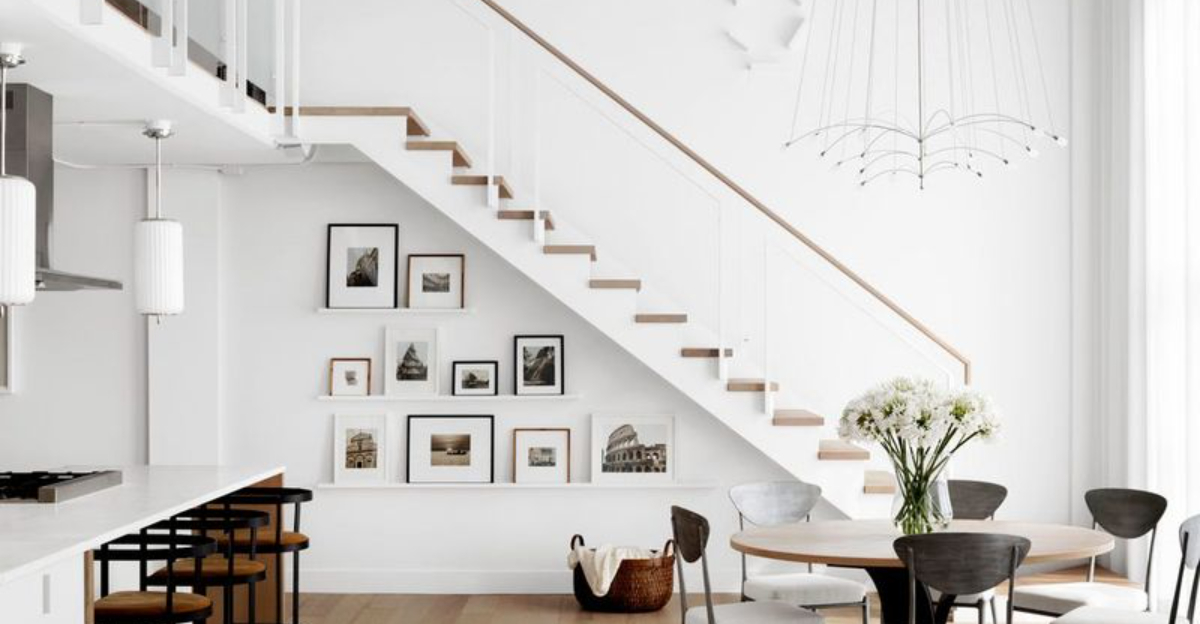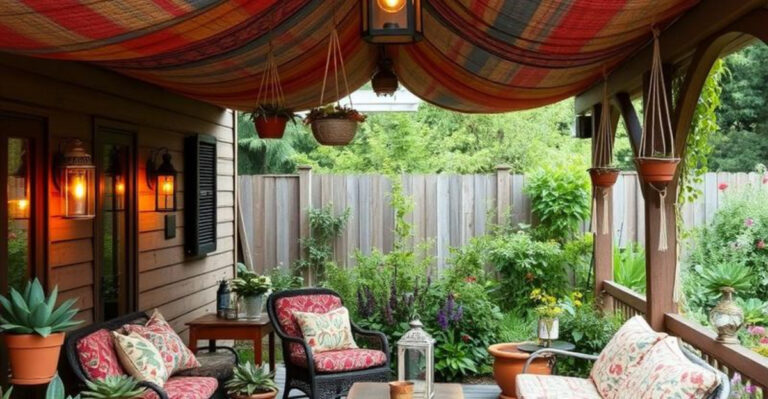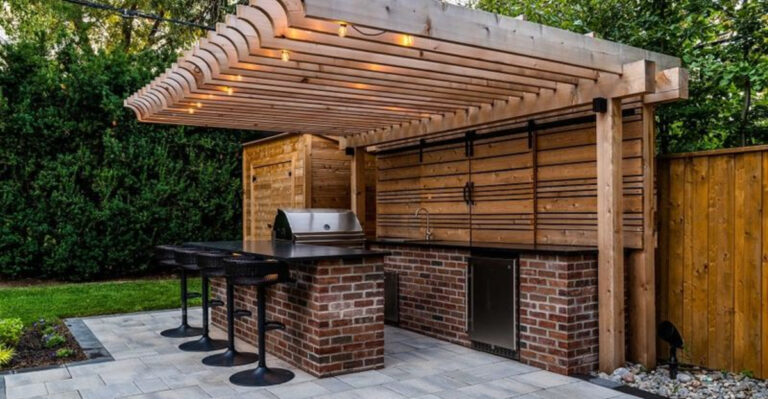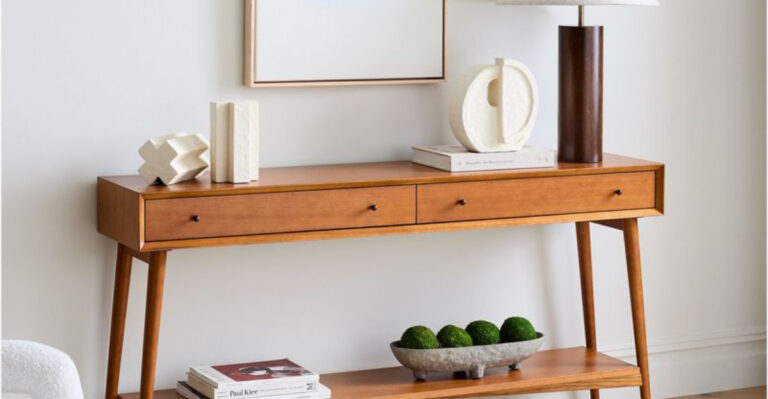16 Cool Solutions For Making High Ceilings Look Better Instantly
I used to think high ceilings were the ultimate design dream, until I moved into a place with them and realized they can feel a little… off. Don’t get me wrong, I love the openness, but the echoes and empty wall space? Not so much.
It took some trial and error, but I learned that you don’t need a full-blown renovation to make them work. With a few smart design moves, you can cozy up even the tallest room and make it feel balanced and beautiful.
If your ceilings are soaring, here’s how to turn them into your home’s standout feature.
1. Hang Statement Lighting At Eye Level
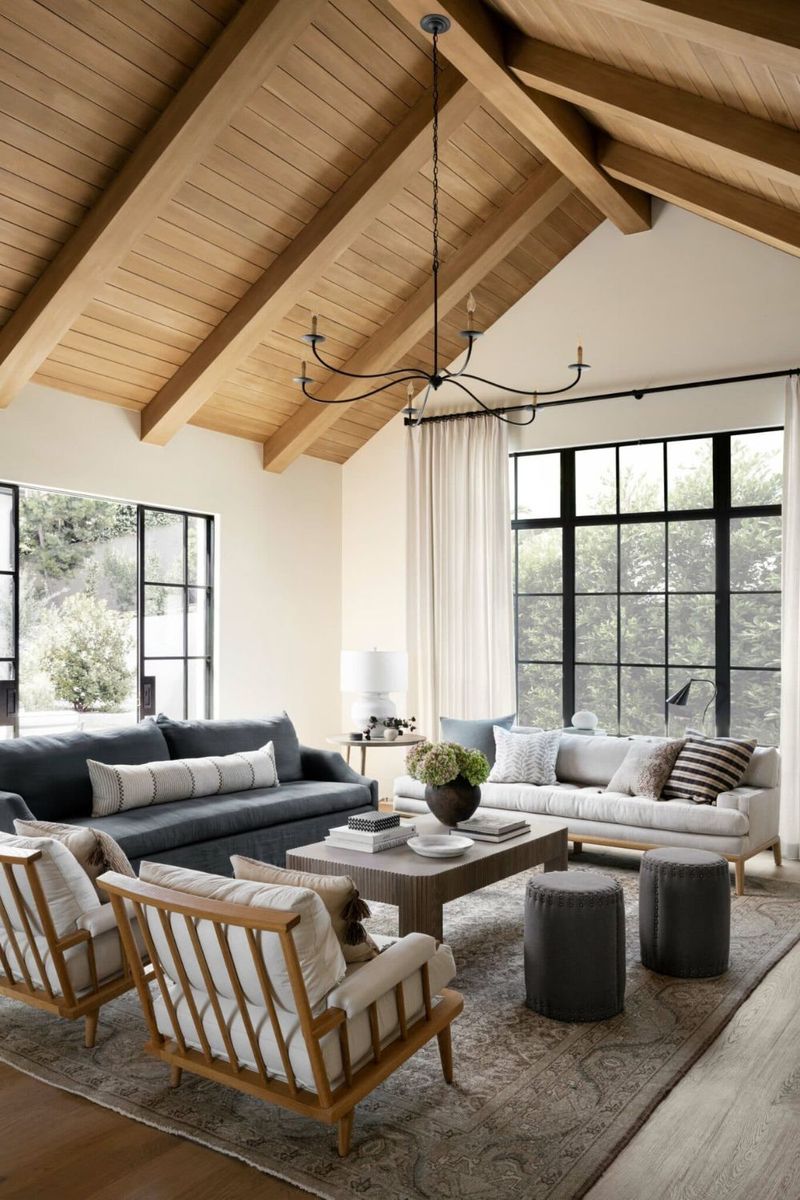
Forget about tiny fixtures that get lost in all that vertical space. Bold pendant lights or a dramatic chandelier hung at the right height can instantly make your room feel more intimate and cozy.
Position your lighting about 7 feet from the floor to create a visual anchor point. This trick works especially well over dining tables or kitchen islands where people naturally gather.
The key is choosing fixtures that command attention without overwhelming the space. Think of it as jewelry for your room.
2. Create Horizontal Lines With Molding
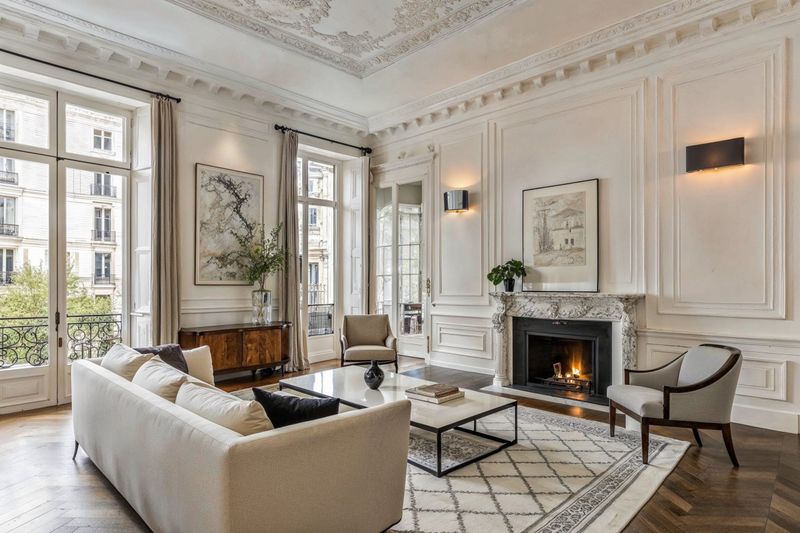
Crown molding isn’t just for fancy Victorian homes anymore. Adding horizontal trim work at different heights breaks up those endless wall expanses and gives your eyes something interesting to follow.
Chair rails, picture rails, and decorative molding strips work like magic to create visual breaks. You can paint them in contrasting colors or keep them subtle with matching tones.
The best part? This solution adds architectural interest without requiring major construction work or permits.
3. Use Tall Furniture To Fill Vertical Space
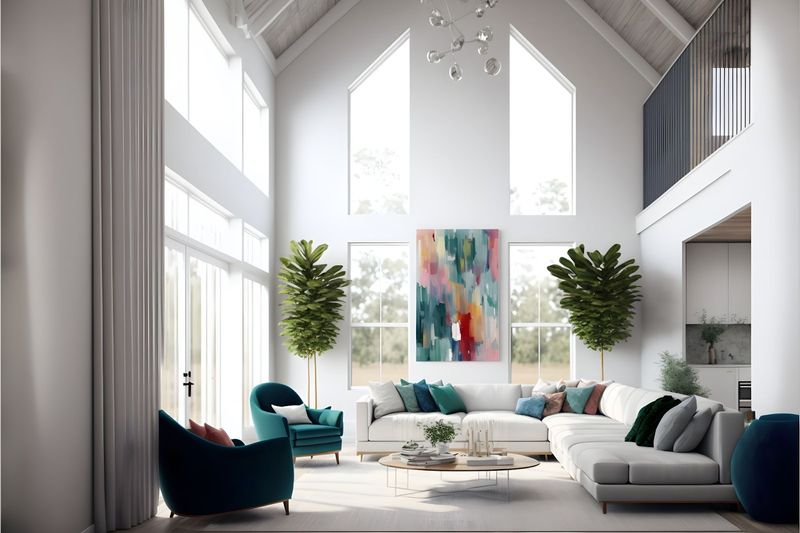
Short furniture in a high-ceiling room looks like dollhouse pieces in a giant’s house. Tall bookcases, armoires, and floor-to-ceiling storage units help balance the proportions perfectly.
Stack furniture vertically when possible. Put a tall lamp on a side table, or layer artwork up the wall behind your sofa.
The goal is to draw the eye upward gradually rather than leaving a huge gap between your furniture and the ceiling.
4. Paint The Ceiling A Darker Color
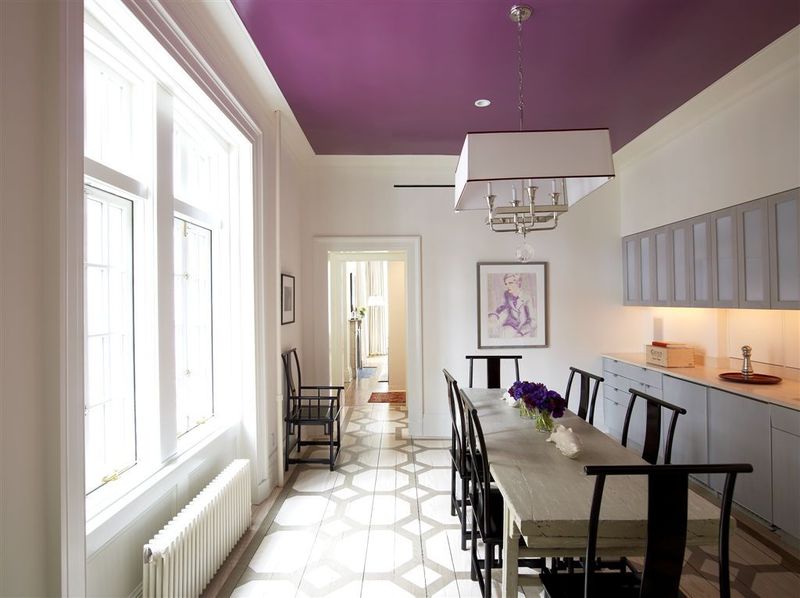
White ceilings might seem like the safe choice, but they can make high spaces feel even more cavernous. A darker ceiling color creates the optical illusion of bringing the ceiling down closer to you.
Deep blues, charcoal grays, or even bold jewel tones can work wonders. The contrast makes the room feel more intimate and cozy.
Don’t worry about making the space feel smaller. The right dark color actually adds drama and sophistication while solving your height problem.
5. Install Floor-To-Ceiling Curtains
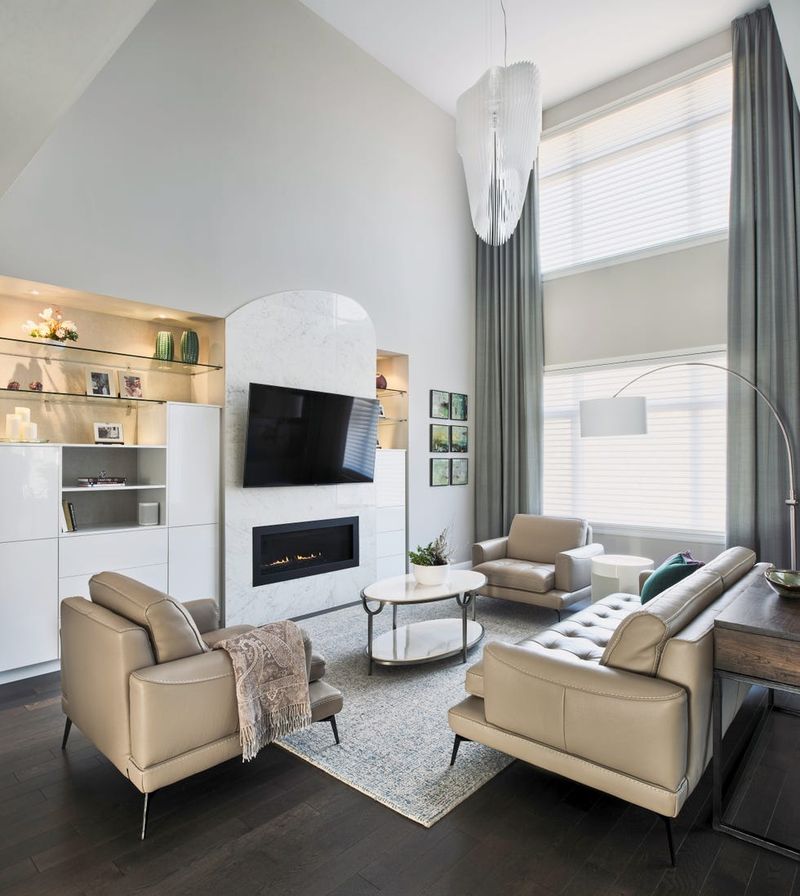
Hanging curtains from the actual ceiling instead of just above the window frame is an instant game-changer. This simple trick makes windows appear larger and more proportional to the room.
Choose curtains that puddle slightly on the floor for extra drama. The vertical lines created by the fabric help balance out all that height.
Even if your windows are small, this technique creates the illusion of grand, floor-to-ceiling windows that belong in the space.
6. Add A Gallery Wall That Climbs The Wall
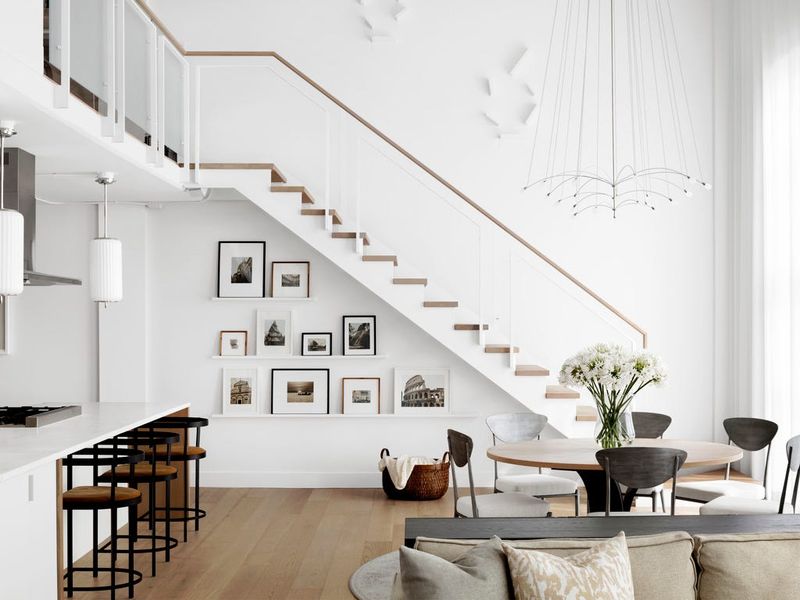
Tiny pictures scattered randomly on a high wall look lost and lonely. Instead, create a gallery wall that boldly climbs up the wall, filling the vertical space with personality and visual interest.
Mix different sizes and shapes of frames to create movement. Start at eye level and work your way up, but don’t be afraid to go high.
This approach turns your wall into a conversation starter while solving the scale problem beautifully.
7. Bring In Oversized Plants And Greenery
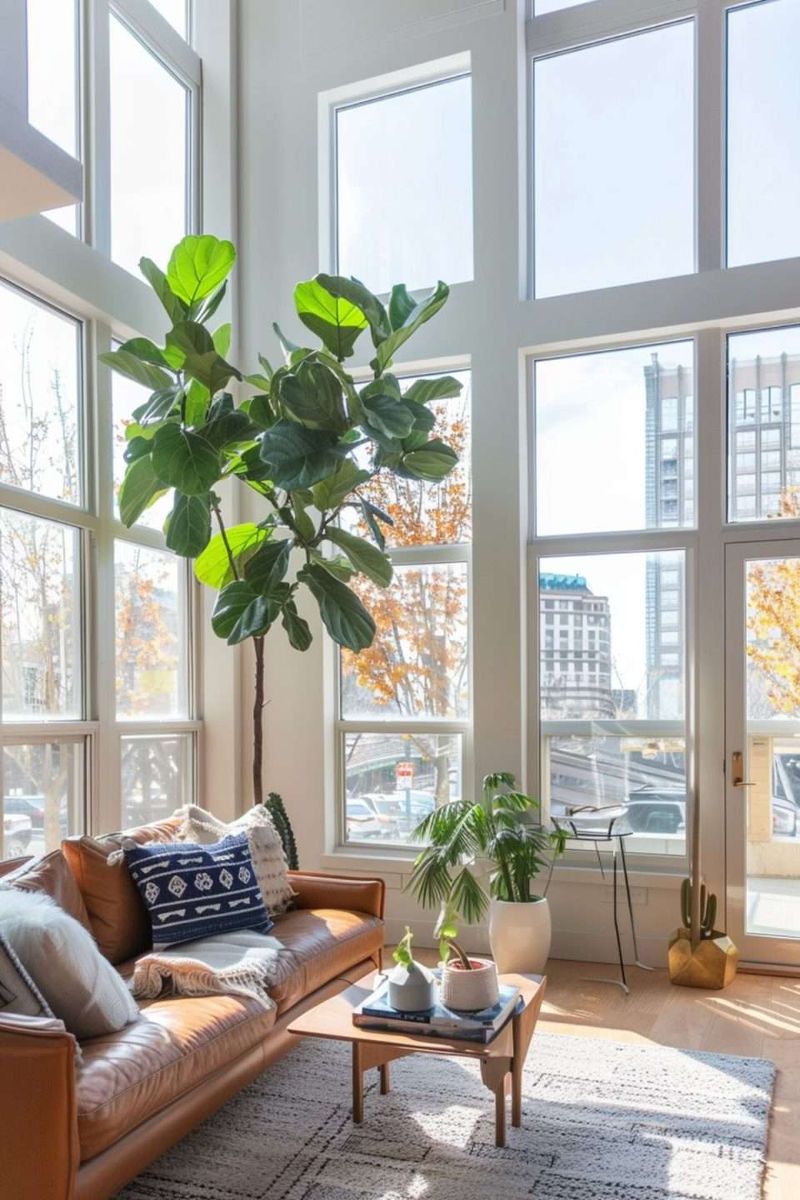
Nothing fills vertical space quite like a gorgeous fiddle leaf fig or a towering bird of paradise. Large plants add life, color, and natural texture while helping to balance out those soaring ceilings.
Group plants of different heights together for maximum impact. Tall floor plants paired with hanging planters create layers of green goodness.
Plus, plants improve air quality and make any space feel more welcoming and lived-in.
8. Install Floating Shelves At Multiple Heights
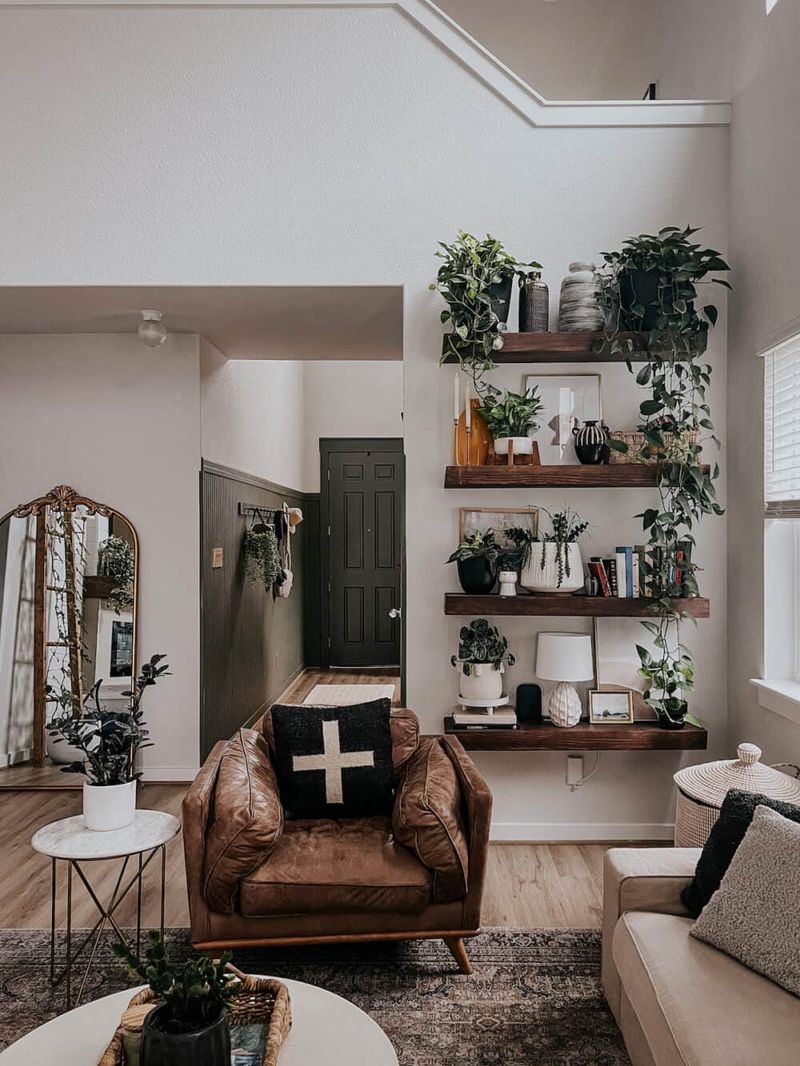
Floating shelves aren’t just for storage anymore. They’re perfect for creating horizontal lines that break up tall walls while adding functional display space for books, plants, and decorative objects.
Install them at different heights rather than in perfect rows. This creates visual interest and gives you flexibility for displaying items of various sizes.
The key is to make them look intentional rather than random. Plan your arrangement before you start drilling holes.
9. Use Vertical Stripes Or Patterns
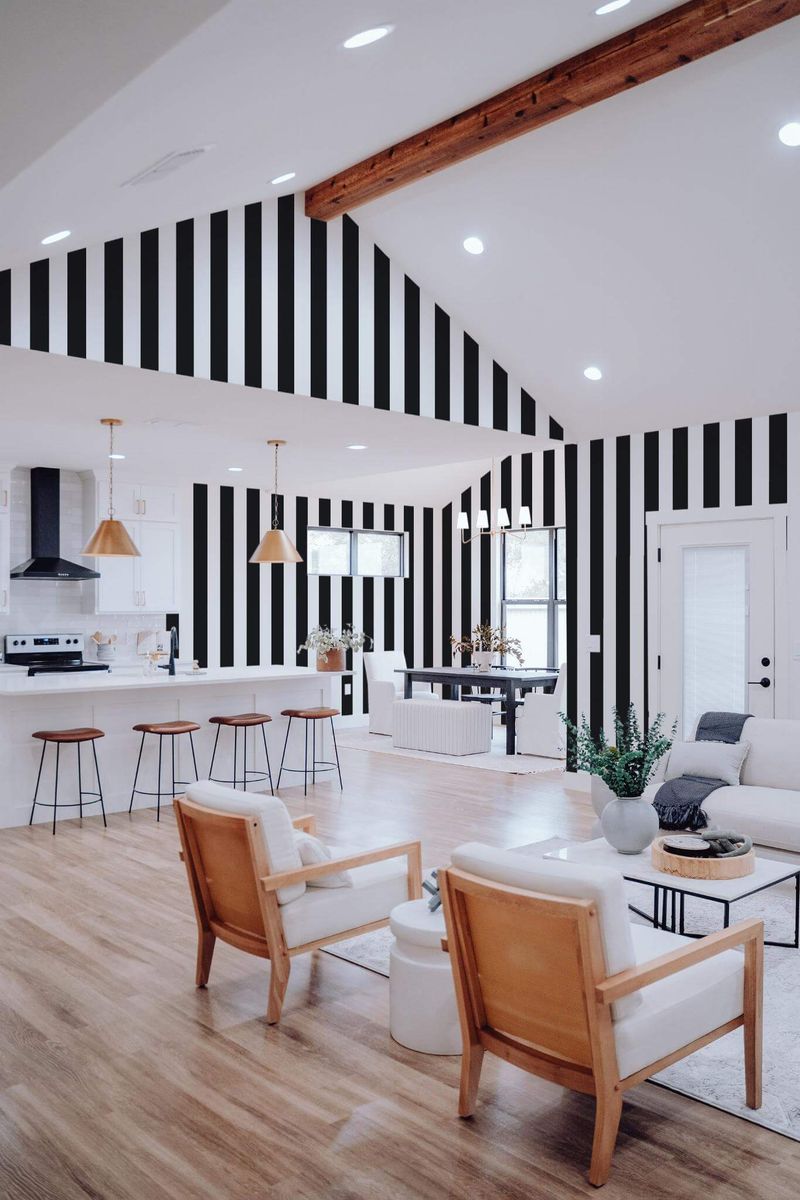
Wallpaper with vertical stripes might seem counterintuitive, but it actually helps create rhythm and movement on tall walls. The pattern gives your eyes something to follow and makes the space feel more dynamic.
Subtle stripes work just as well as bold ones. Even textured wallpaper with vertical elements can achieve this effect without being overwhelming.
The trick is choosing patterns that complement your furniture rather than competing with it for attention.
10. Create A Cozy Reading Nook

High ceilings can make rooms feel impersonal, but a well-designed reading nook brings things back down to human scale. Position a comfortable chair near a window with good lighting and surround it with personal touches.
Add a side table, a soft throw blanket, and maybe a small bookshelf. The goal is creating an intimate space within the larger room.
This works especially well in corners where you can use the walls to create a more enclosed, cozy feeling.
11. Hang Tapestries Or Large Fabric Art
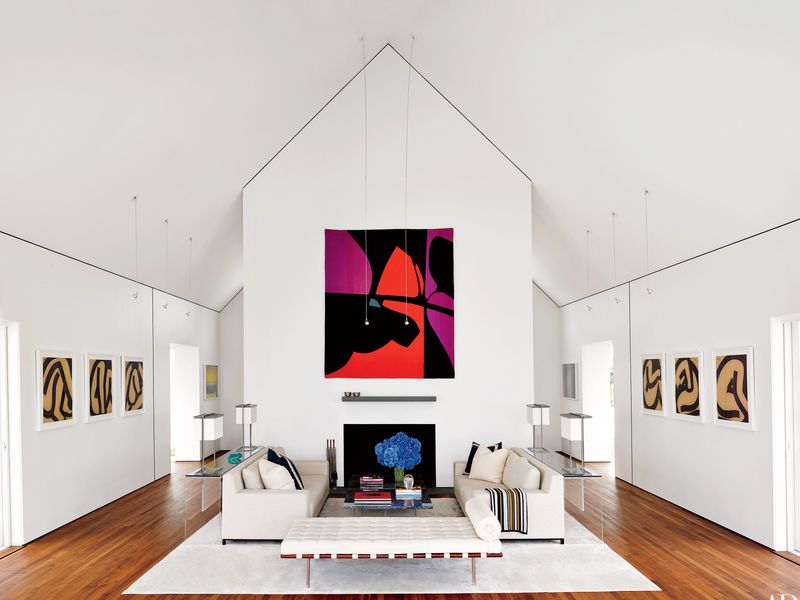
Fabric adds warmth and softness that hard surfaces can’t match. A large tapestry or fabric art piece can cover significant wall space while introducing texture and color to your room.
Unlike rigid artwork, fabric moves slightly with air currents, adding subtle life to the space. It also helps absorb sound, which is often an issue in high-ceiling rooms.
Choose pieces that reflect your personality and complement your existing color scheme for the best results.
12. Add Architectural Beams Or Faux Beams
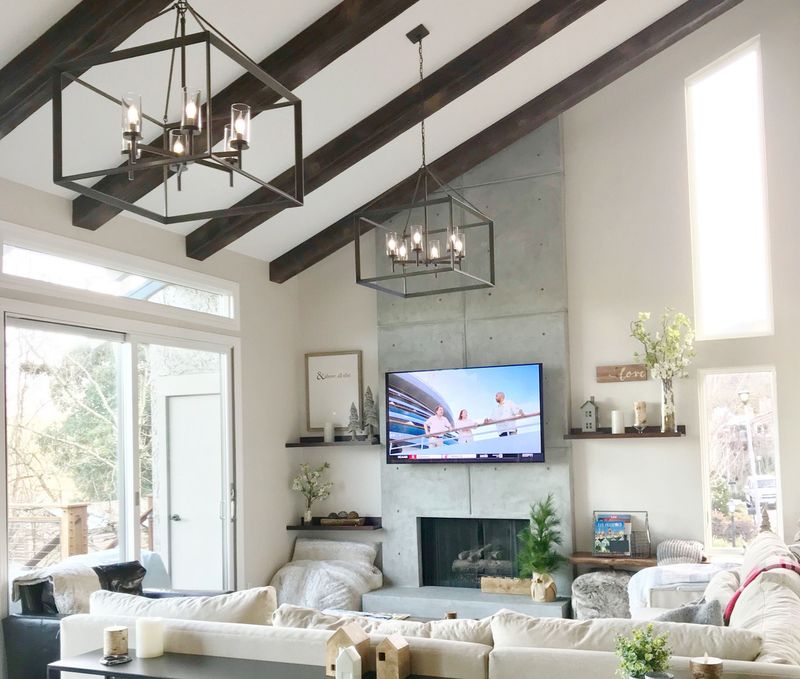
Exposed beams instantly add character and help break up the visual expanse of a high ceiling. If your home doesn’t have original beams, faux beams made from lightweight materials can achieve the same effect.
Beams create natural horizontal lines that make ceilings feel lower and more intimate. They also add architectural interest and can support hanging elements like lights or plants.
Choose beam styles that match your home’s overall aesthetic, whether that’s rustic farmhouse or modern industrial.
13. Use Layered Lighting At Different Heights
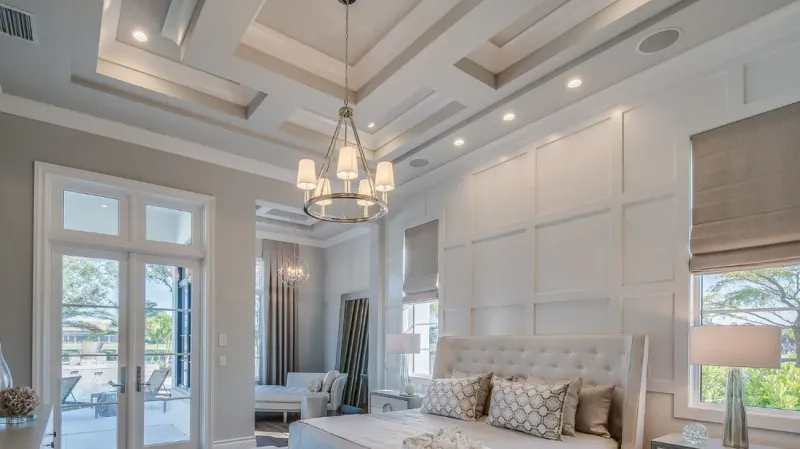
One overhead light fixture in a high-ceiling room is like trying to light a cathedral with a birthday candle. Layer your lighting with table lamps, floor lamps, and wall sconces at various heights.
This creates pools of light that make the space feel more intimate and functional. Each light source serves a different purpose and adds to the overall ambiance.
The varied heights help fill the vertical space while providing the right amount of light for different activities.
14. Install A Statement Accent Wall
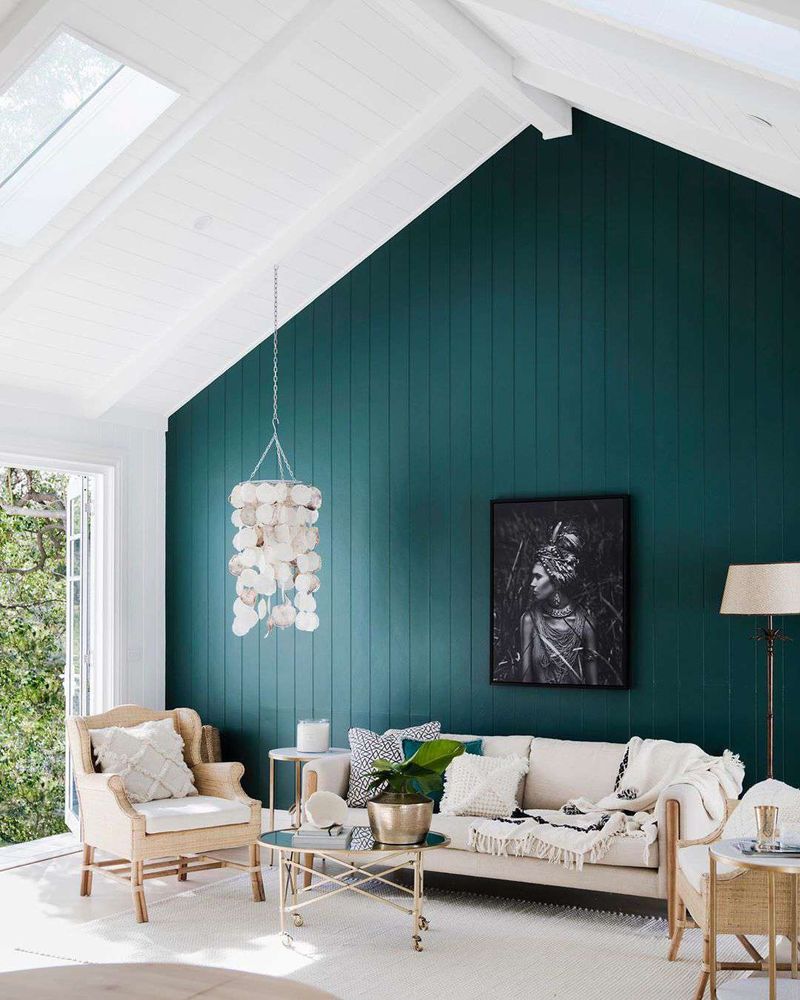
One dramatically different wall can anchor the entire room and make high ceilings feel more manageable. Think bold paint colors, textured materials, or eye-catching wallpaper that draws attention horizontally rather than vertically.
Wood paneling, stone, or even a mural can create a focal point that gives the room personality and scale. The key is choosing something that complements rather than overwhelms.
This technique works especially well behind beds, sofas, or dining areas where you want to create visual weight.
15. Create Zones With Area Rugs
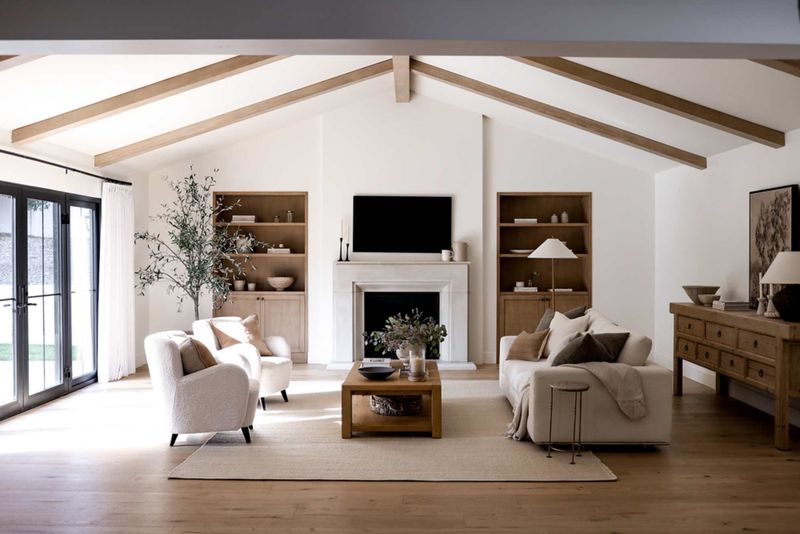
Large area rugs help define different areas within a high-ceiling room and bring the focus down to floor level. They create intimate conversation areas and help furniture groupings feel more connected.
Choose rugs that are large enough to anchor your furniture. All front legs of seating should ideally sit on the rug to create cohesion.
Multiple rugs can define different zones in an open-concept space, making each area feel purposeful and appropriately scaled.
16. Hang Mirrors Strategically
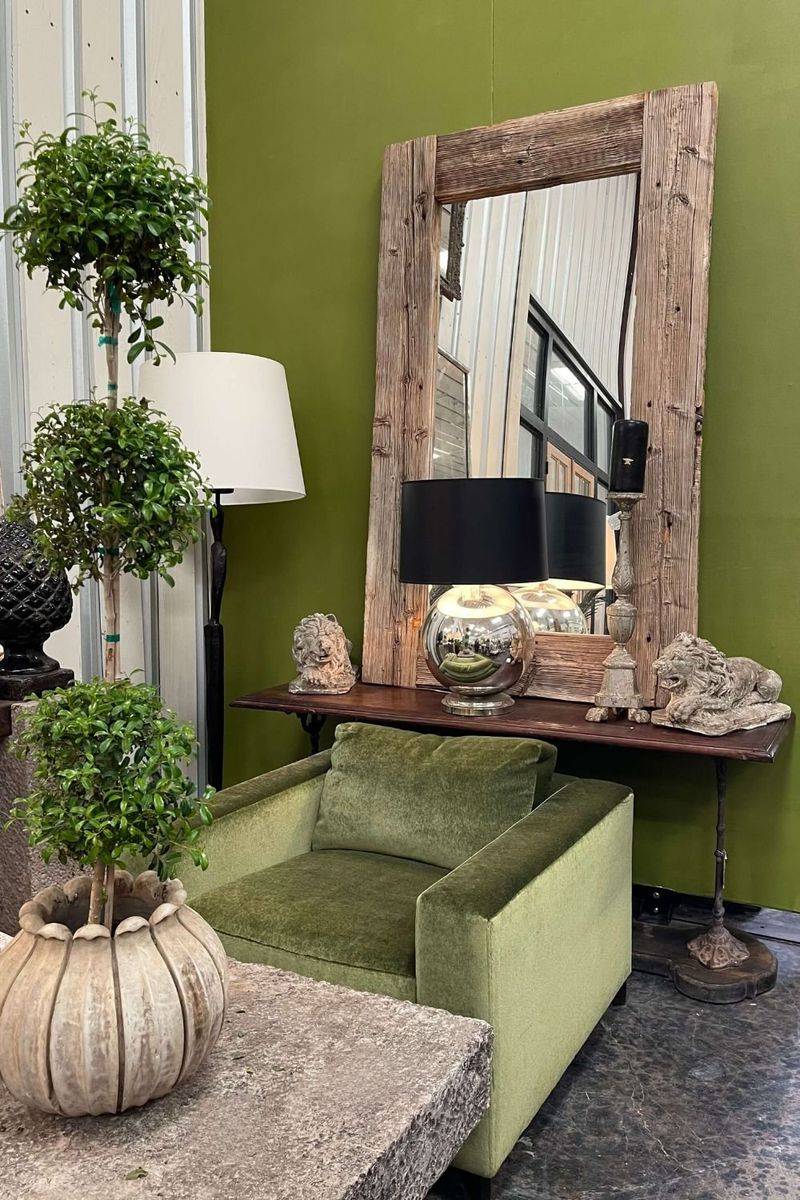
Mirrors can work magic in high-ceiling rooms by reflecting light and creating the illusion of more balanced proportions. Position them to reflect interesting views or to bounce light around the room.
Large mirrors hung horizontally can make walls appear wider and less towering. Multiple mirrors grouped together can create an art installation effect.
The reflective surfaces add sparkle and movement while helping to fill wall space in an interesting way.

